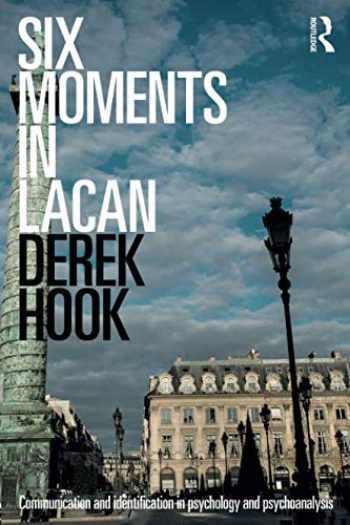What is the real || 1
Lacanian Mojo (The real part 1 — Moments):
This week, I want to start writing about the real, but I’m 100% positive that I won’t be able to write all of the things I want to write about it. I plan to stretch my writing about the real out over the next few editions of CP.
Today you’ll be getting an introduction to the real as it appears at three different phases throughout Lacan’s teaching.
When I wrote about the imaginary and the symbolic, I did not use any references, but the real is the most confusing of the three registers. Because of how super weird the real is, I’m going to reference a few texts that I think have been helpful to me as I’ve struggled to get a sort of understanding of what the real is.
There is a good entry on the real over at the No Subject Wiki, which starts like this,
The real is one of Lacan's most difficult and at the same time most interesting concepts. The difficulty of understandingthe real is partly due to the fact that it is not a 'thing'; it is not a materialobject in the world or the humanbody or even 'reality'. For Lacan, our reality consists of symbols and the process of signification. Therefore, what we call reality is associated with the symbolicorder or 'social reality'. The real is the unknown that exists at the limit of this socio-symbolic universe and is in constant tension with it. The real is also a very paradoxical concept; it supports our social reality - the social world cannot exist without it - but it also undermines that reality. A further difficulty with understanding the real is that Lacan's conception of it changed radically throughout his career.
This brings me to the idea of tracking the changes in Lacan’s thinking/teaching through different “moments.”
Moments:
One of the reasons that the real is difficult to understand is that (as is often the case with Lacan) Lacan changes the way he thinks and teaches about it over time.
Within the Lacanian circles (at least the ones I move around in), there is a tendency to refer to the different ways Lacan teaches about a particular concept as a “moment.”
People will say things like, “In Seminar VII, at this moment, Lacan talks about jouissance as something that we get from transgression.” This is important because when you’re talking to a well-read Lacanian about something an important concept (like jouissance, object a, or the real), it’s a good idea to also say what period or the moment you’re referring to. Generally, saying something like “In the early/middle/late Lacan [concept] is described such and such way.” Referring to a particular Écrit or Seminar will also clarify the moment you’re referring to. Jacques-Alain Miller’s The Six Paradigms of Jouissance and Derek Hook’s Six Moments in Lacan are good examples of scholars thinking through the various moments in Lacan’s teaching.


However, if you don’t specify a time/moment when you’re referencing a concept, you could be asked something like, “What moment of Lacan’s teaching are you referring to?”
The moments of the real:
Some concepts get lots of moments, and others only get a few. As far as I can tell, the real has three main moments in Lacan’s teaching. (It may have more. This is just as far as I can tell.)
- There is the Lacan of the 1930s and 1940s, which is mainly found in the Écrits. During this moment, the real is not very sussed out.
- There is the real in Lacan’s early work, in the 1950s and possibly early 1960s.
- There is the real in Lacan’s middle work, which starts with Seminar XI in 1964 and lasts until the 1970s.
- Finally, there is the real in Lacan’s late work after1970, where the real became the central register in Lacan’s thinking.
Moment 1 of 4:
In the very early Lacan (what I tend to think of as Lacan’s demo-tape), the real is vaguely written about as something beyond the experience of the image and the symbolic, as what is beyond what we can see or capture with the signifier/language.
Another I think about how the real is represented during this moment in Lacan is to conceive as it of Lacan’s version of it as Kantian think-its-self, or as Hegelian absolute-knowledge. Both of these Kantian and Hegelian concepts exist, but not in a way that human beings can access.
For this reason, later Lacanians will try to signal that the existence of the real is different than the existence of the things we can grasp and comprehend. This is done by saying/writing “the real ex-ists.” I think this is the Lacanian way of saying the real ex-isits, it is out there influencing everything, but it does not exist in the same way that this newsletter exists.
Anyway, I hope this helps explain how the real is present in a vague way in the demo-tape (very early) Lacan.
Time to stop:
I thought I’d write more, but I wanted to keep my newsletter per week streak going for three weeks, and there is only so much time in a week. So we will have to leave the real for now, and move on to the other sections of CP.